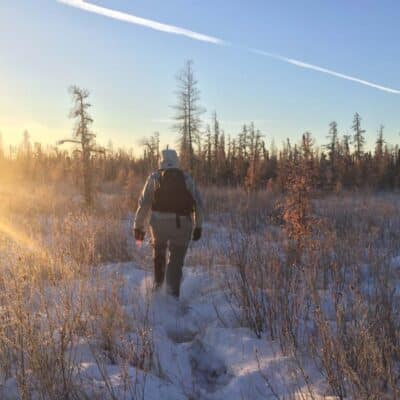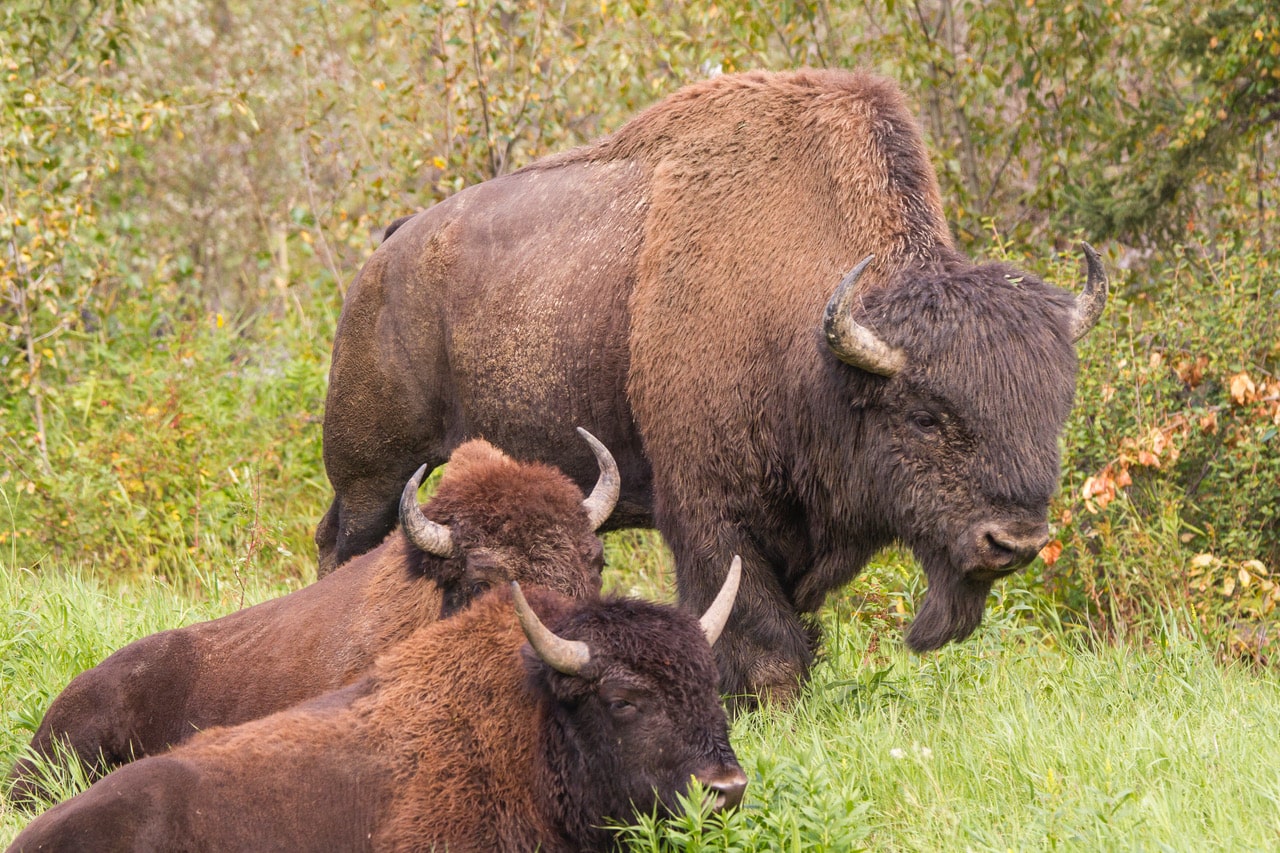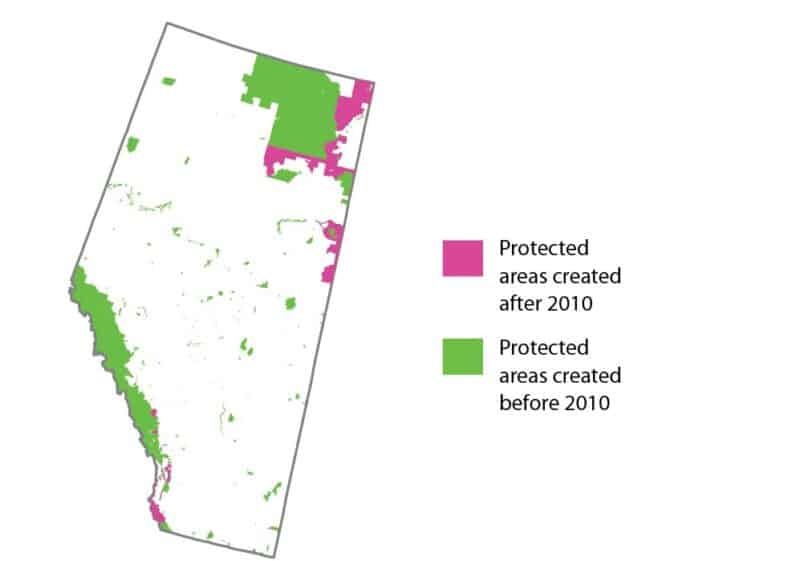The good news is that the answer to these problems is simple: make room for nature. Now, more than ever, is it crucial that we protect what’s left of our natural spaces.
Get the latest conservation updates for Northern Alberta:
What are the 30 x 30 Targets?

The increased protection of nature and our landscapes is essential to the survival of Alberta’s wildlife, and to restore the health and abundance of species. Sufficient parks and protected areas are crucial for nature’s resiliency against climate change impacts.
The Canadian federal government recognizes the importance of increasing the protection of nature. Alongside 70 countries, as part of the High Ambition Coalition for Nature, Canada has committed to protecting 30% of Canada’s lands and oceans by 2030.
With this commitment and meaningful action, Canada has the opportunity to become a global leader in nature conservation.
However, in order to reach this federal goal, it will require commitments and collaboration across the country. All provinces and territories hold unique landscapes worth protecting.
Take Action
Stay Updated

Protected Areas in Alberta
Alberta has many beloved parks and protected areas safeguarding our unique wildlife and providing beautiful recreation opportunities – but it is not enough.
Currently, Alberta has 15.6% of its land base protected, with 12.5% of this protection coming from Federally protected lands such as our National Parks.
The significance of reaching 30 x 30 targets
Nature isn’t just nice to look at! Protecting at least 30% of our land and waters, with emphasis on Indigenous led conservation, is a scientifically supported way to address cumulative threats and help halt biodiversity loss.

Threats to species in Canada and Globally
The WWF Living Planet Report Canada (LPRC) 2020 reveals that since 1970, populations of Canadian species assessed as ‘at risk’ have plunged by an average of 59 per cent. Species assessed as globally ‘at risk’ have seen their Canadian populations fall by an average of 42 per cent.
On average, threatened species face about 5 different threats, all at the same time. The cumulative impacts of these threats create tremendous species to thrive. In Alberta, these threats include habitat loss and fragmentation from industrial resource extraction, pollution, invasive species, disease, agriculture, system modification, and climate change.
Putting a value to Intact Ecosystems
Functioning, intact ecosystems support a diversity of life that have importance beyond the intrinsic value of natural ecosystems. These ecosystems provide humans with important ecosystem services including pollination, clean air, clean water, medicines and innovation that are vital to human well-being. Globally, these services are worth an estimated USD 125-140 trillion (US dollars) per year, i.e. more than one and a half times the size of global GDP. (OECD, 2019). Serious declines in species population trends are a measure of overall ecosystem health.
Read more about the scientific support:
There are no existing protection targets in Alberta.
Where Does Alberta Stand?

Alberta is not currently committed to meeting any protected area goals. Ignoring the need to protect Alberta’s landscapes is bad news for Alberta’s wildlife and wild spaces.In CPAWS’ 2021 Parks Report Card, Alberta received an F for their dismal performance in advancing conservation.
Species are in decline due to habitat disturbance and loss. Scientific evidence suggests thatincreasing protected areas is one key measure that Alberta can adopt to help our wildlife thrive, fight climate change, and to ensure the existence of a healthy environment for future generations.Alberta must commit to meeting 30% protection by 2030.
Take Action
Stay Updated
STAY INFORMED
Protect the Wilderness
To receive news and updates from CPAWS Northern Alberta, including opportunities to get involved, join our mailing list below.
